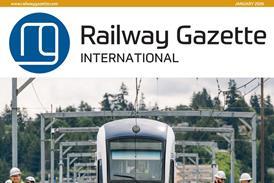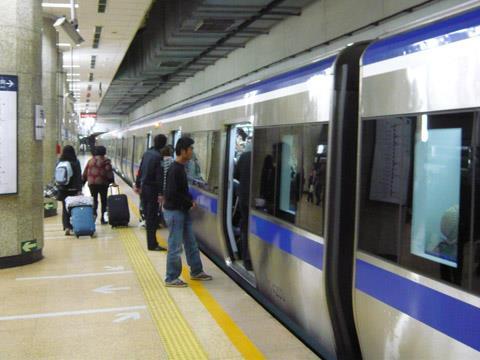
CHINA: The opening of three new metro lines and six extensions in Beijing has increased the capital’s urban rail networkto a total length of 783 route-km.
More than 57 km of new line was opened for revenue service on December 31, including a fully automated branch to serve the venue for the forthcoming Winter Olympic Games.

The 4·2 km Line 11 connects the Olympic venues at Xinshougang with Line 6 at Jinanqiao, initially serving three stations. A fourth station at Moshikou at the northern end of the route has not yet opened. The line was envisaged as part of the city’s 2008-15 expansion programme, but it was not approved by the National Development & Reform Commission until December 2019.
Designed for a maximum speed of 100 km/h, Line 11 is operated with four-car aluminium bodied Type A trainsets manufactured by Beijing Subway Rolling Stock Equipment Co, although the stations have been built with provision for six-car trains. Peak headway for the initial service is 5 min 30 sec.
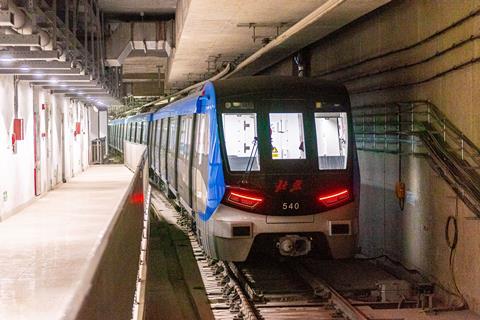
The 15·8 km southern section of north-south Line 17 serves the southeastern part of the conurbation. The initial seven-station Phase I runs from Jiahuihu to an interchange with Line 14 at Shilihe, and has an end-to-end journey time of 18 min. The line is being operated by eight Type A trains from CRRC Qingdao Sifang, out of a total of 68 eight-car 100 km/h trainsets on order.
Being run by the Beijing MTR joint venture between Hong Kong’s MTR Corp, Beijing Capital Group Ltd and Beijing Infrastructure Investment Corp under a 20-year operations and maintenance concession, the 49·7 km Line 17 with 21 stations was approved by the Beijing Municipal Development & Reform Commission in December 2016, and construction began in May 2017. The remainder of the line serving the northeast of the city is expected to open in stages by the end of 2023.

Express metro link
Designed for fully automatic operation, north-south express metro Line 19 has been under trial operation since September 2021. The initial 22·4 km section between Mudanyuan and Xingong serves 10 stations, although four have not yet opened.
Unlike most urban lines in Beijing where the average spacing between stations is 1·2 km and trains run at a maximum speed of 80 km/h, the express Line 19 has stations spaced at an average of 2·3 km and is designed for 120 km/h operation, although the first section is initially restricted to 100 km/h. This offers an end-to-end journey time of 24 min.
The line is worked by a fleet of 25 eight-car Type A trainsets branded as Orca. Manufactured by CRRC Changchun and assembled locally at CRRC Beijing Feb. 7th Locomotive Co, the 3 000 mm wide units have a nominal capacity of 3 456 passengers. The trains operate every 8 min off-peak and every 6 min at peak times.
As Line 19 interchanges with the Daxing Airport Express service at Caoqiao, it has been tailored to accommodate a substantial flow of airport passengers. Two cars in each trainset are fitted with ‘high-quality’ seats in a 1+1 layout leaving plenty of space for luggage. All stations are provided with accessible toilets including low sinks for use by children.
Closing the gaps
Also opened on December 31 was the 4·3 km central section of Line 8, with three stations, completing the 51·6 km route which has opened in stages since 2008. Connecting up the isolated northern and southern sections enables through running from Zhushikou to Zhongguo Meishuguan (National Art Museum). End-to-end journey time is 85 min, with trains running every 2 min at peak times.
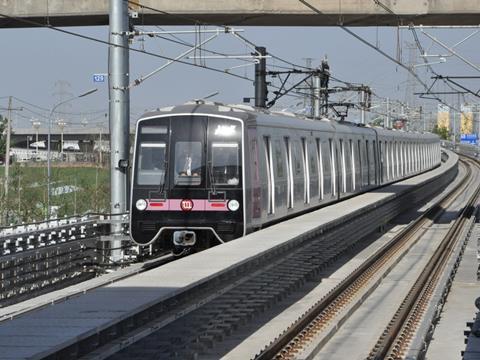
The 4 km central section of Line 14 between Xiju and Beijing Nan adds a further five stations to that route, taking it to a total length of 50·8 km with 35 stations. Line 14 is also operated by Beijing MTR Corp under a 30-year PPP concession. Opening of the central section is expected to increase its average ridership to more than 910 000 passengers/day. Line 14’s existing fleet of 63 six-car Type A trainsets has been augmented by a further 14 units, increasing capacity by 34%.
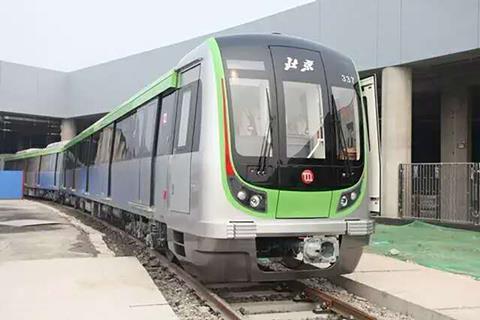
To the west of the city centre, Beijing MTR Corp opened a 1 km extension of Line 16 from Ganjiakou to Yuyuantan Dongmen, taking that route to an operational length of 31·9 km. A further southwestern extension of this line is expected to open before the end of 2022, including an interchange with the recently-opened section of Line 14 at Lize Shangwuqu.
‘As our network grows, we will continue to provide high-quality operations and services, enhance customer experience with new initiatives and empower our operations and services by new technology’, said Beijing MTR General Manager Wilson Shao. This would bring ‘more value to the community’ and support the sustainable development of the city, he added.
Suburban links

In conjunction with the opening of Line 11, the low-speed suburban maglev Line S1 has been extended by 1·2 km from Pingguoyuan to the metro interchange at Jinanqiao. This elevated section runs parallel with the westernmost part of Line 6. Minimum headway between maglev services is now 5 min 10 sec.
Another suburban route to grow on December 31 was the Changping Line, where a 12·6 km southern extension is due to be completed by the end of 2022. An initial 1·6 km section at the northern end of the extension has been put into operation, with services extended from Xierqi to Qinghe. The Changping Line is operated by a fleet of 32 Type SFM13 trainsets delivered by CRRC Sifang in three batches since 2009. It currently offers a peak headway of 2 min 30 sec.
Finally, a 1·8 km underground extension takes the automated Capital Airport Express further into the city centre. Under construction since 2015, this short stub runs west from the former terminus at Dongzhimen to an interchange with Line 5 at Beixinqiao. Minimum headway on the Capital Airport Express is now 11 min.



